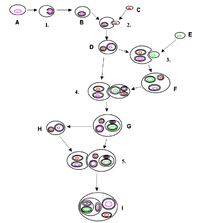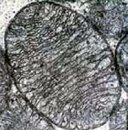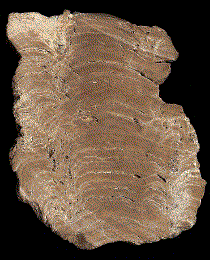I do have a question regarding this statement;
https://www.newscientist.com/article/dn17453-timeline-the-evolution-of-life/
Google. That is a difference of 1.35 billion years earlier than 2.15 billion years. Can the fossil records show dates that far apart?
Because the earlier date for the appearance of cyanobacteria is controversial. There's a whole literature on it in the journals.
The earlier date seems to be based on fossil evidence that looks to the eye like modern day stromatolites, which are associated with cyanobacteria today so many assume they must have involved cyanobacteria then too. There are additional supporting strands of evidence for early photosynthesis such as early traces that might be indicative of carbon-fixation. In other words, the whole thing is kind of speculative, it's inferences from evidence.
On the other hand, the so-called "Great Oxygenation Event" seems to have happened about 2.4 billion years ago. That's more than a billion years after the hypothesized first appearance of photosynthetic life according to the scheme above. (Despite being more than a billion years later, life on Earth still probably only consisted of prokaryotes at that time, bacteria and archaea.) This event involved a dramatic rise in the amount of oxygen in the Earth's atmosphere (hence its name). Evidence for this is abundant, since the oxygen caused widespread oxidation resulting in a distinct worldwide rust-layer in the geological record. But inevitably, there are controversies about what actually caused it. The leading hypothesis is that it was biogenic and associated with the appearance of oxygenic photosynthesis.
So how can the early-photosynthesis and the late-photosynthesis views be reconciled? If photosynthesis was as early as the early-photosynthesis advocates want it to be, why didn't it alter the atmosphere much earlier?
The mainstream view today seems to be that the first photosynthesizers did appear early but possessed relatively crude and inefficient photosynthetic systems. We still see these earlier systems today in some bacteria. The important thing to note is that these earlier versions of photosynthesis didn't break down water releasing O2. There are basically two of these earlier systems, distinguished by the molecules that serve as electron-receptors, sometimes called 'Photosystem I' and 'Photosystem II'.
The modern efficient oxygenic photosynthesis consists of both Photosystem I and Photosystem II combined and working in concert. The appearance of this 'new and improved' version of photosynthesis seems to have been later than the appearance of either of its precursors and is likely what is associated with the Great Oxygenation Event. Here's a diagram:
The difficulty in identifying cyanobacteria as the earliest photosynthesizers is that cyanobacteria practice the newfangled oxygenic photosynthesis. (They would have to if they are the ancestors of today's plant chloroplasts, since all the higher plants practice the more advanced photosynthesis.)
So my (layman's) opinion is it's possible that the very early fossil things being interpreted as stromatolites are indeed biogenic. If so, it's possible that they are associated with photosynthesizers. But... I'm skeptical that these organisms were cyanobacteria. Whatever early prokaryotes produced these mats were probably some of the earlier photosynthesizers ancestral to the cyanobacteria.
Here's a very good short survey article written for botanists that explains all of this in relatively easy to understand non-technical language.
http://www.plantphysiol.org/content/plantphysiol/154/2/434.full.pdf
The author writes: "The accumulated evidence suggests that photosynthesis began early in Earth's history, but was probably not one of the earliest metabolisms and that the earliest forms of photosynthesis were anoxygenic, with oxygenic forms arising significantly later."
Which returns us to the topic of abiogenesis, LUCA and the first forms of life. As fascinating as all of this stuff about photosynthesis and cyanobacteria is, and the evolutionary history of microorganisms is fascinating (more than 80% of the history of life on Earth was before multicellular organisms appeared, it's when much of the essential biochemistry was hammered out), it's all
subsequent to hypothetical abiogenesis and its initial products.
There are probably good reasons to think that photosynthesis appeared subsequent to the appearance of earliest life. The author writes: "Chlorophylls are essential pigments for all phototrophic organisms. Chlorophylls are themselves the product of a long evolutionary development, and can possibly be used to help understand the evolution of other aspects of photosynthesis. Chlorophyll biosynthesis is a complex pathway with 17 or more steps. The early part of the pathway is identical to heme biosynthesis in almost all steps and has clearly been recruited from that older pathway."
So even if we accept the early photosynthesis view, it's still exceedingly unlikely in my opinion that the earliest cells were photosynthesizers. If the earliest lifeforms on Earth were photosynthesizers, it would perhaps be an argument for an extraterrestrial origin of life and for panspermia









